12 Spectacular Types Of Bamboo, Including Kerri Dall’s Fargesia Favourites

PERENNIALS > BAMBOO > VARIETIES

Ed is a horticultural therapist, professional gardener and writer. Ed has a BSc in Occupational Therapy from Coventry University and a Diploma in Social and Therapeutic Horticulture (DipSTH) via Thive, the RHS and Pershore College. Ed runs a community kitchen garden in West Sussex, where he leads horticultural therapy sessions.
Reviewed By PETER LICKORISH

Peter is a Horticulture Lecturer and self-employed Horticulturist, with a passion for diverse areas of the industry - from garden design to the science behind plant growth and propagation. He has completed the Royal Horticultural Society’s Master of Horticulture (MHort) Award and lectures on RHS courses at Bedford College.
Contributions From KERRI DALL
IN THIS GUIDE
- About Bamboo Types
- Running vs Clumping Varieties
- Giant vs Dwarf Varieties
- 1) Phyllostachys nigra (AGM)
- 2) Shibataea kumasaca (AGM)
- 3) Phyllostachys aurea
- 4) Fargesia nitida
- 5) Pseudosasa japonica (AGM)
- 6) Phyllostachys aureosulcata f. spectabilis (AGM)
- 7) Pleioblastus variegatus (AGM)
- 8) Fargesia ‘Red Panda’
- 9) Sasa veitchii
- 10) Chusquea culeou (AGM)
- 11) Himalayacalamus hookerianus
- 12) x Hibanobambusa tranquillans ‘Shiroshima’
- References
BAMBOO GUIDES
Container Growing
Division
Overwintering
Pruning
Removal
Root Barriers
Sowing
Varieties
Bamboo is a group of plants from the Poaceae family (grasses) that are fast growing and native to many parts of the world including the Americas, Asia, Africa and Australasia.1Schröder, S. (2021, August 19). Where does Bamboo grow? Guadua Bamboo. Retrieved April 25, 2023, from https://www.guaduabamboo.com/blog/where-does-bamboo-grow
Bamboo is a popular plant to grow and rightly so, as they can add height, screening, colour, movement and even sound to a garden.
With many different varieties from clump forming to runners and dwarf to giant – there is a bamboo to suit all gardens.
In this guide, we share advice from Kerri Dall, owner of Scottish Bamboo, who has grown more than 50 different varieties of bamboo here in the UK over a fifteen-year period.
Her favourites are the Fargesia varieties, due to the variety of colours and non-invasive habit – see more on this below.
About Bamboo Types
Bamboo stalks or shafts are known as culms – and it is the culm that is popularly thought of as ‘bamboo.’

The vast majority of species’ culms are hollow.
Bamboo is unique among trees in that its culms emerge from the ground at their full diameter; they do not grow thicker as they gain height.
Bamboo grows and spreads by way of its rhizomes, which are subsoil stems that link the root system to the culms.
Running vs Clumping Varieties
Running bamboo species, true to their name, frequently take over fair-sized areas of land, as the rhizome ‘runners’ spread aggressively.
Though slow-moving species do not spread much in unfavourable conditions, when running bamboo species do a ’sprint,’ they can cover several metres per year.
The species that grow by clumping are much better behaved.
These species’ rhizomes do not send out runners; instead, they gradually enlarge the root system and increase the height of the culm.
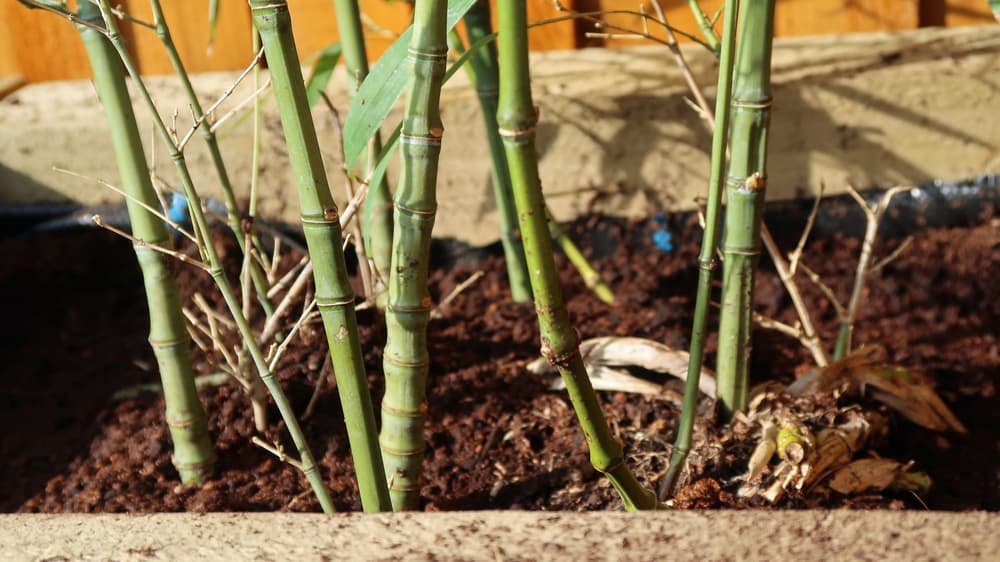
The root system is typically enlarged by only 5-10 inches per year. Thus, they spread much more slowly than running species.
“Clump-forming bamboo has striated, columnar shapes,” shares Peter Lickorish, a Master Horticulturist.
“These are best shown off against a dark background, such as a black fence, with only minimal underplanting with a few ground-cover plants like Ophiopogon planiscapus, or Ajuga reptans.
“You can soften a line of bamboo by planting denser, smaller leaf plants in between, like Taxus baccata ‘Fastigiata Robusta’.
“Talking of robusta, one of my favourite bamboos is Fargesia robusta ‘Pingwu’, which has variegation down the length of its stems that alternate between pearly white and dark green.”
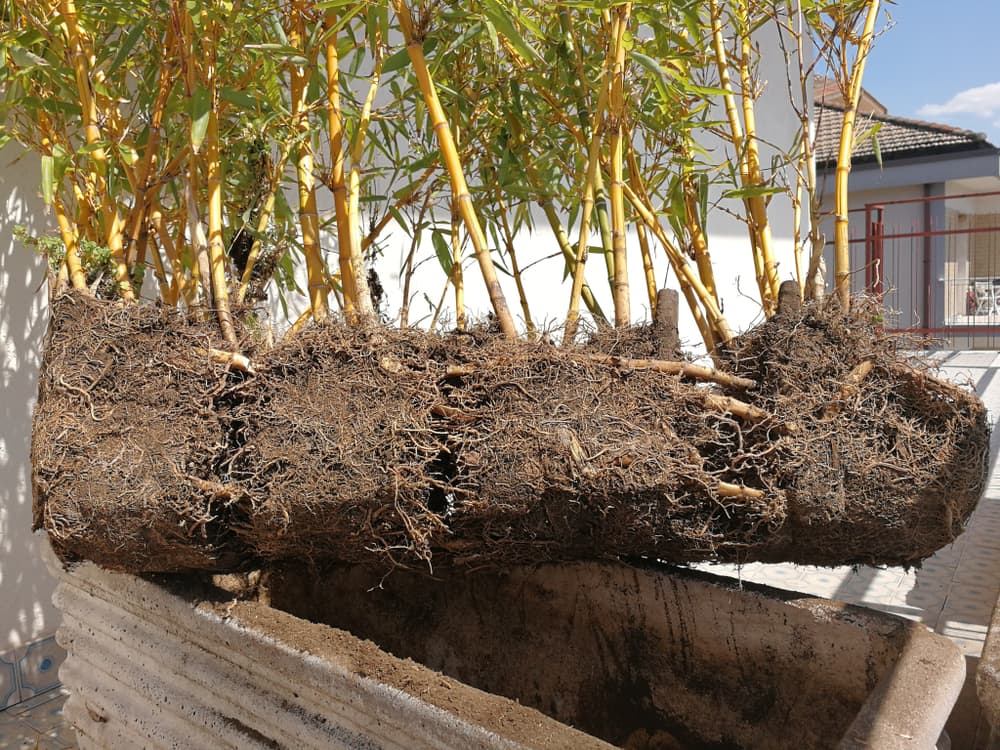
Running bamboo species’ pattern of growth is primarily horizontal across land; clumping bamboo species’ pattern of growth is primarily vertical through space.
The variety within bamboo is such that some differences between species are quite stark; consider that bamboo shoots of only some species are edible.
Some bamboo species are not particularly eye-catching but make excellent construction materials while others are useless for construction but are highly decorative.
Giant vs Dwarf Varieties
At its extremes, bamboo is divided into ‘giant’ and ‘dwarf’ varieties.
A very pretty and also hardy species, Pleioblastus akebono, grows to only 15-60cm.
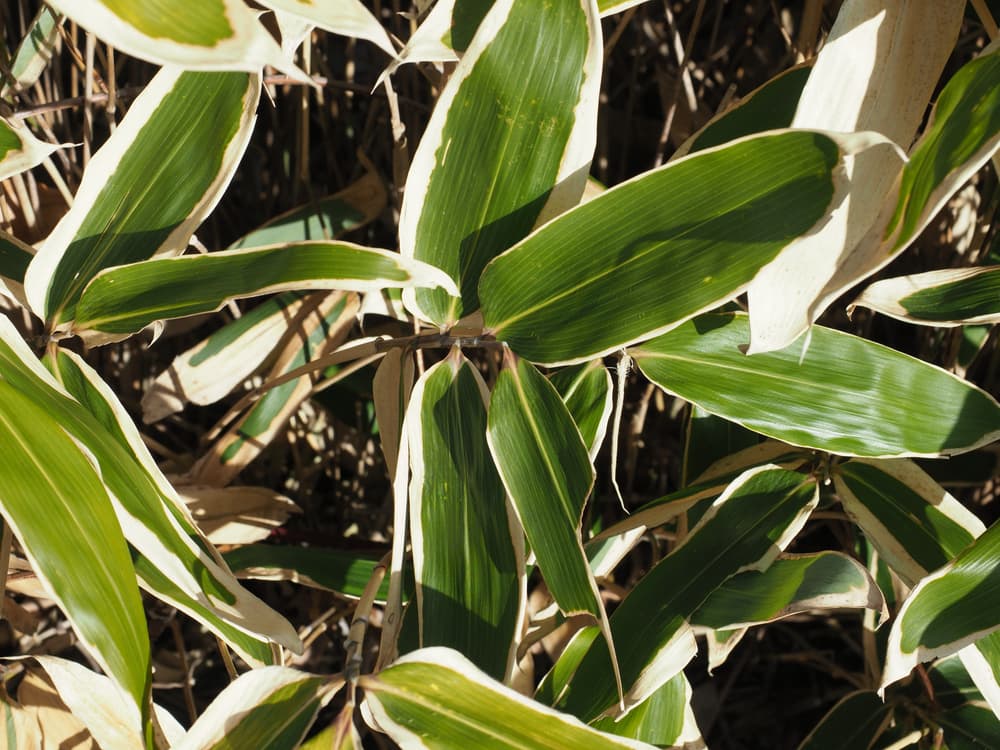
At the other extreme is Dendrocalamus giganteus aka ‘Giant Bamboo.’

Its leaves are about as long as Pleioblastus akebono is tall!
This bamboo can attain a height of up to 35m. That’s a multiple of nearly 60 in the heights of the two species.
Here are twelve popular types of Bamboo which can be grown in the UK, including some very special varieties, which have been awarded the RHS Award of Garden Merit (AGM):
1) Phyllostachys nigra (AGM)

Black bamboo, as it is more widely known, is a spectacular plant.
Growing to an eventual H4m x W4m, it certainly needs space to be shown off to its best.
New growth is green, however, over time the canes turn a striking black that contrasts so well against its green foliage.
With a tendency to spread in warmer climates, its rhizomes need containing to keep to size.
Preferring a sunny and sheltered site on loamy soil, it is H5 rated meaning it will survive winter temperatures down to -10 to -15°C.2Phyllostachys nigra | black bamboo. (n.d.). Royal Horticultural Society. Retrieved March 13, 2023, from https://www.rhs.org.uk/plants/12869/phyllostachys-nigra/details
2) Shibataea kumasaca (AGM)
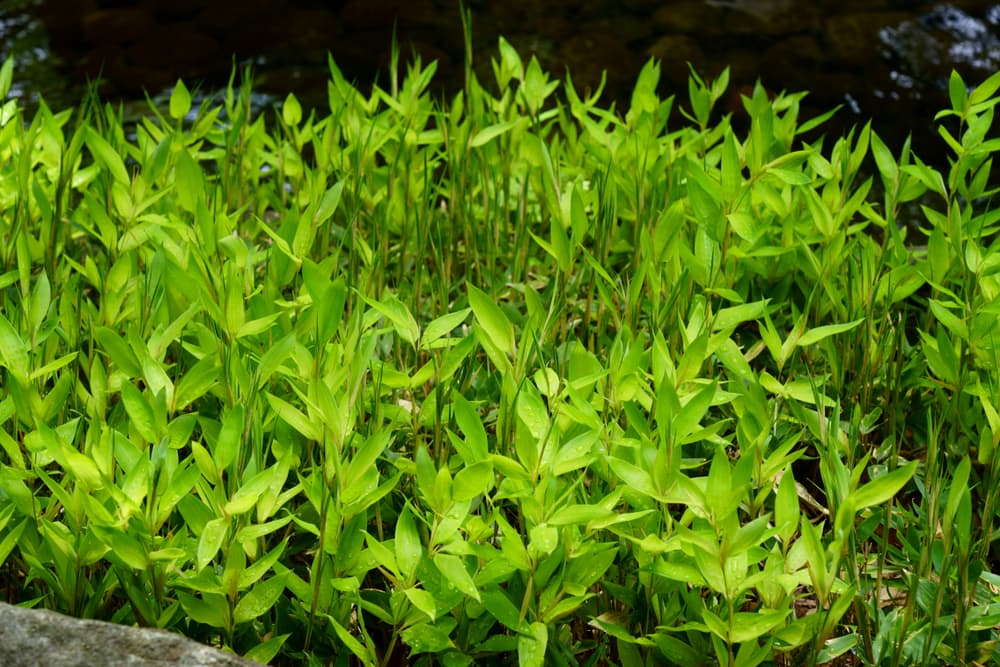
Ruscus-leaved bamboo is a small and clump-forming which grows to H1.5m x W1m over time.
It is ideal for a large container or pot, as it will need to be contained if planted directly into the ground.
Often grown as a low hedge or as ground cover, it looks equally good as a specimen plant, whether in a border or a container.
Being H6 rated it is very hardy and will withstand temperatures as low as -15 to -20°C and can be sited in an exposed or sheltered position.
Shibataea kumasaca grows best on clay or loam and as with most bamboos will not tolerate heavy or waterlogged soil.
3) Phyllostachys aurea
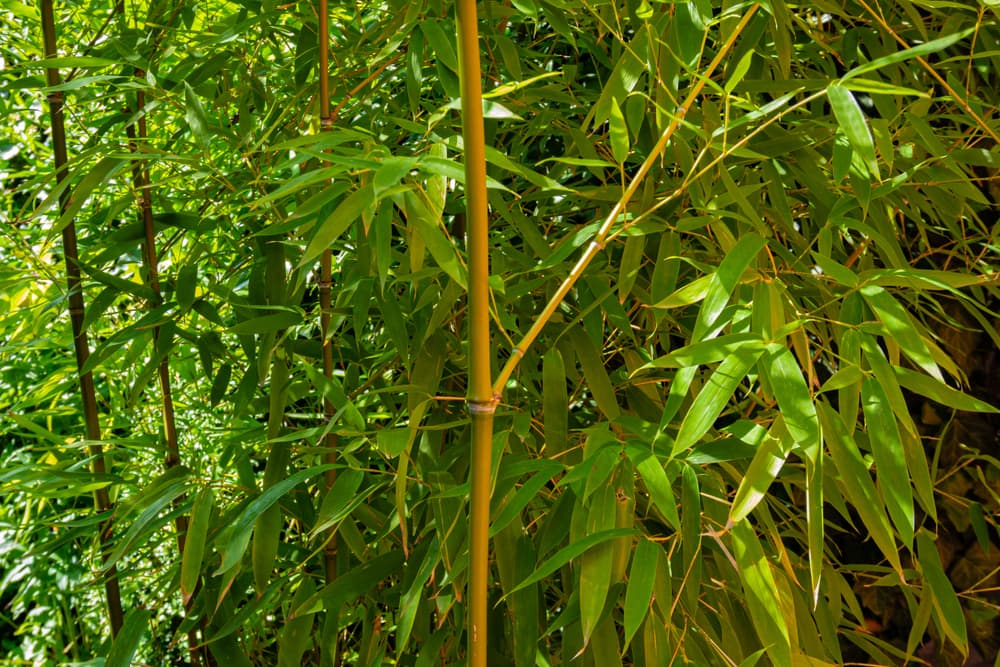
Far better known as fish-pole bamboo, Phyllostachys aurea is a very large variety which can grow to an impressive H8m x W4m.
Producing bright green canes which may turn yellow with age and long slender foliage, it can be clump-forming or spread and requires its rhizomes containing if grown in the ground.
A hardy bamboo that is rated H6, it prefers a sheltered position and loam soil in either full sun or partial shade.
4) Fargesia nitida
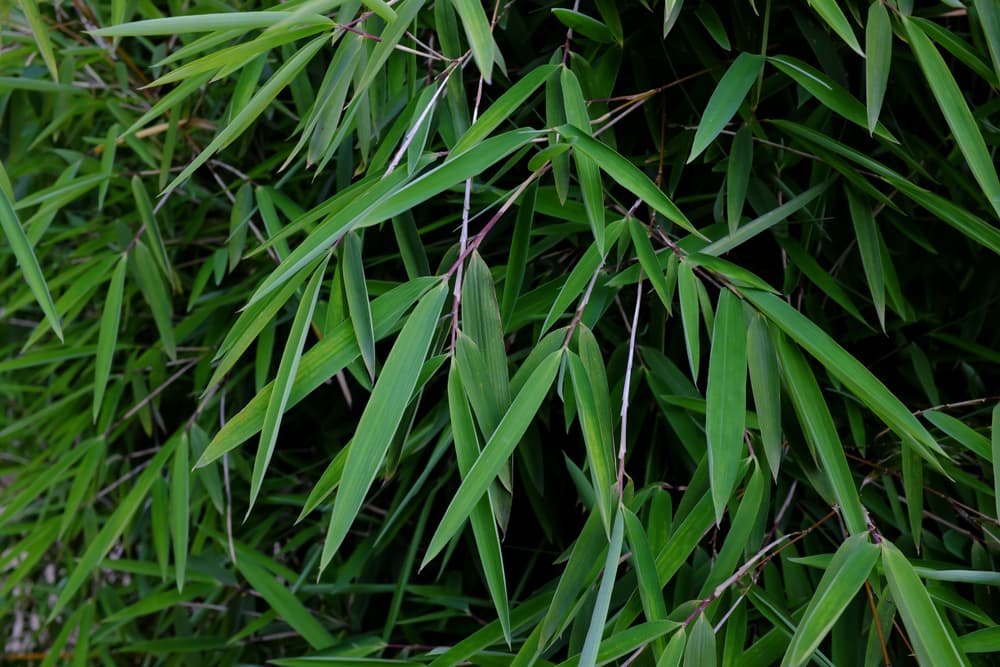
According to Kerri Dall from Scottish Bamboo: “Our favourite varieties of bamboos are the clumping Fargesia varieties, mainly because they are very well behaved and non-spreading.
“There are also so many different coloured culms (canes) ranging from green to yellow to red and even black and purple”.
Fargesia nitida or Chinese fountain bamboo is an elegant and arching bamboo that tends to grow tall, but not too wide.
Growing to H4m x W1.5m, it has a clump-forming habit and should not need its roots curtailing.
Due to its height and tendency not to spread, Chinese fountain bamboo is often used as a hedge or screening plant and will tolerate full sun, but grows best in part shade.
Fully hardy and tough, F. nitida is H5 rated but has a delicate appearance due to its short and slender leaves.
The canes begin green, but can turn purple with age adding to their stunning appearance.
5) Pseudosasa japonica (AGM)
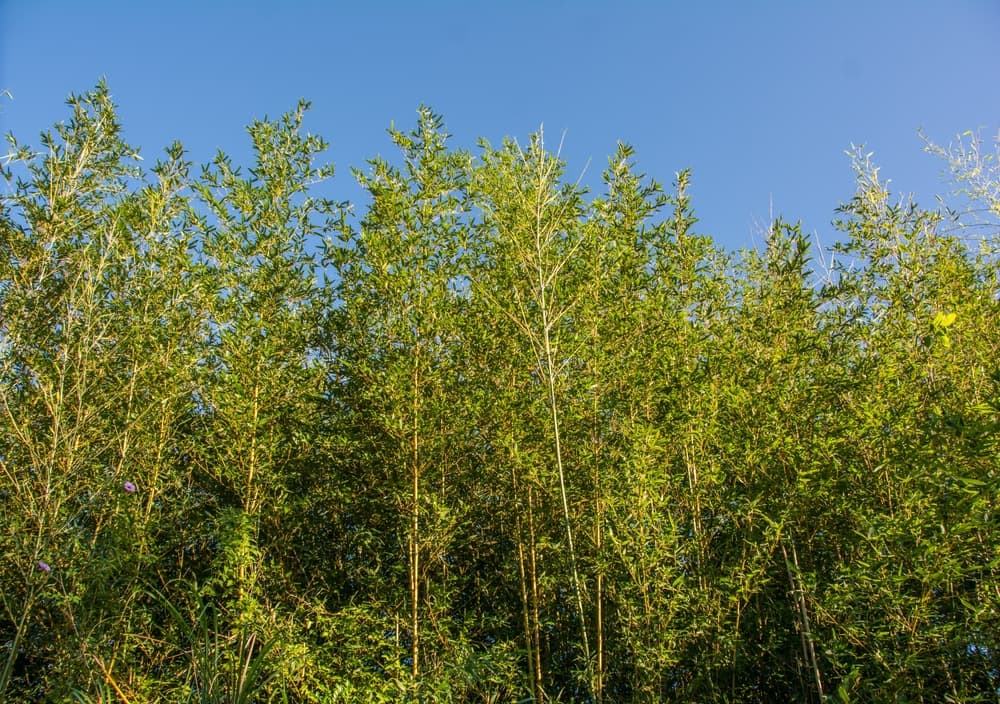
Widely known as Arrow bamboo, Pseudosasa japonica is a huge specimen that is fast growing and can grow to H8m x W4m.
Upright in habit, Arrow bamboo is very tolerant and will cope with either an exposed or sheltered aspect and clay, loam or sandy soil.
Hardy down to -10 to -15°C, it will survive a severe winter in most parts of the UK.
Being very vigorous, its rhizomes must be constrained unless a large bamboo thicket is the goal.
6) Phyllostachys aureosulcata f. spectabilis (AGM)

Or the far easier to say, Showy Yellow Groove Bamboo is a spectacular plant.
Another large variety, it will grow to an eventual H8m x W5m and is best planted on loam or chalk soil.
Less hardy than other bamboos, it requires a sheltered spot, but will still withstand a harsh UK winter.
With yellow canes that darken over time and green grooves, this is a stunning bamboo and looks outstanding when grown near the contrasting P. nigra.
With a suckering habit, it requires a barrier to contain its rhizomes to keep it under control.
7) Pleioblastus variegatus (AGM)
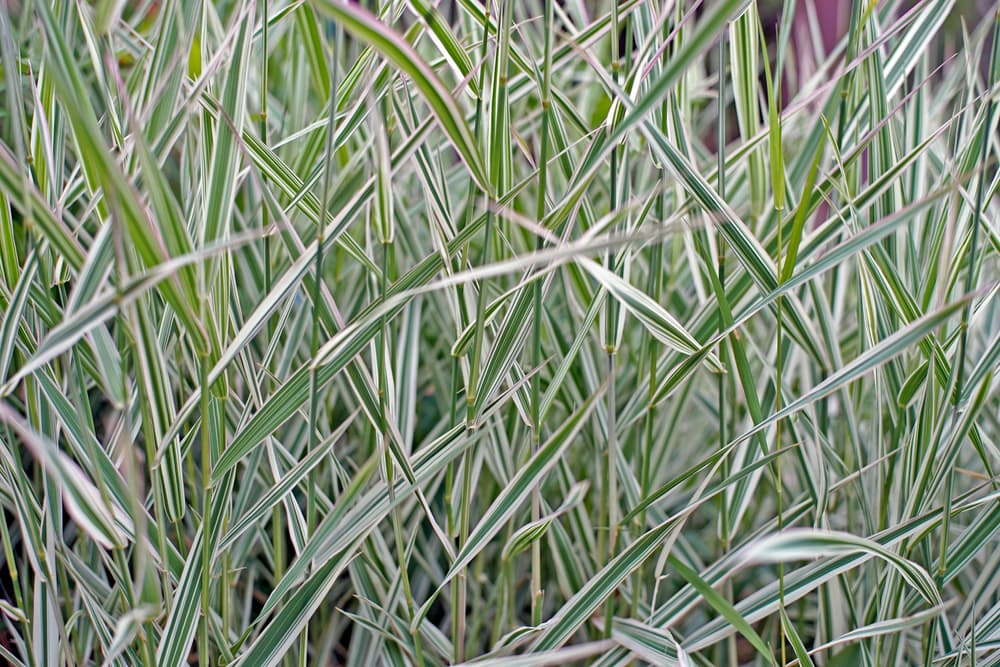
Dwarf white striped bamboo or Pleioblastus variegatus is a smaller variety and one which is far better suited to courtyards or smaller gardens.
Growing to only H1m x W1.5m, it is ideal for a large container or pot and grows best in a sheltered spot in full sun.
Producing green and cream striped leaves up to 20cm long on thin green canes, it will add movement and sound to the garden as it gently moves in a breeze.
A spreading variety, if grown directly in a bed or a border its rhizomes must be contained to curb its growth.
8) Fargesia ‘Red Panda’
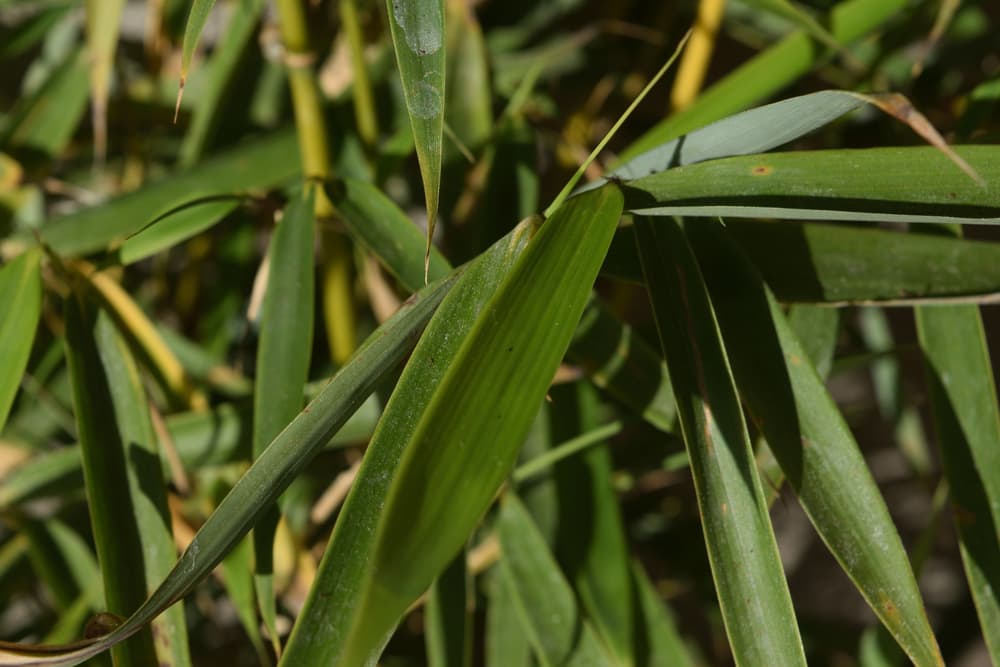
Apparently, F. ‘Red Panda’ was once so hard to get hold of that it was given its elusive name.
This is one of the favoured types of Kerri and the team at Scottish Bamboo.
Thankfully Umbrella bamboo, as it is also known, is now easy to obtain as it is a sensational plant.
With an upright habit and growth of up to H4m x W1.5m, it certainly makes an impact.
Its green new growth turns orange then red over the course of a couple of years making a wonderful contrast to its green slender foliage.
Although a clump-forming variety, a rhizome barrier is typically recommended to prevent its spread.
However, Kerri argues: “Fargesia varieties can be grown in pots or planted into a garden border due to their well-behaved nature”.
F. ‘Red Panda’ grows well in most well-drained soils and will cope with full sun or partial shade.
9) Sasa veitchii
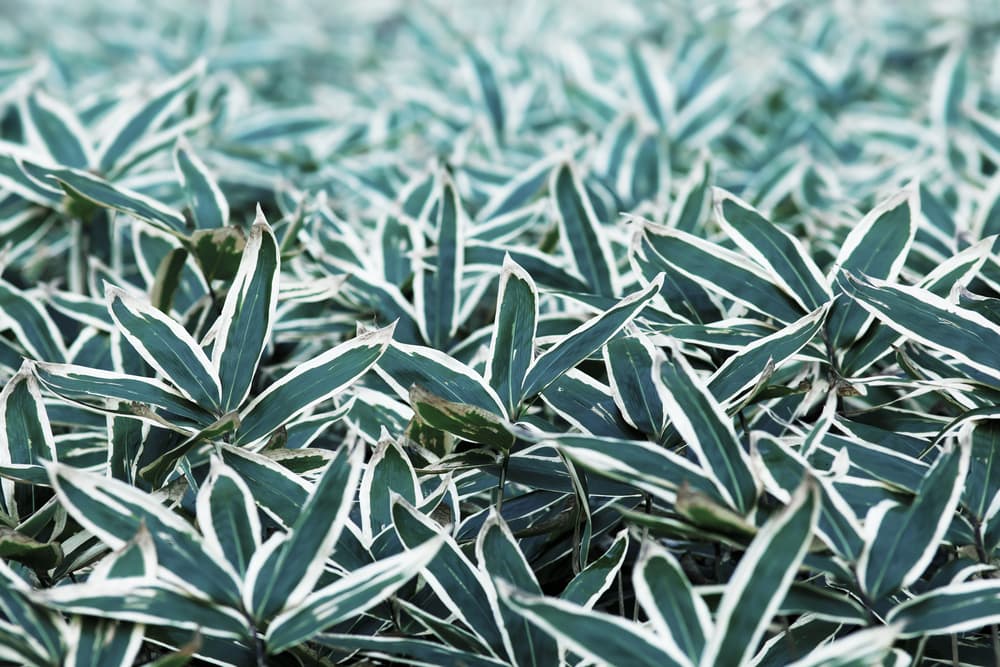
Also known as Veitch’s bamboo, Sasa veitchii is slightly unusual with its broader and more glossy leaves than most other bamboo.
A vigorous bamboo, it spreads with ease and is a great plant for high ground cover.
Come autumn, the leaves’ edges dry out producing a variegated appearance against the deep green centres.
Growing to H1.5m x W1.5m it grows well in a container and will need restricting if grown directly in the ground.
10) Chusquea culeou (AGM)

Chilean bamboo as it is better known is another unusual bamboo due to the fact that its canes are solid instead of hollow.
Originating from South America it is less hardy than other bamboos, but will withstand temperatures down to -10°C (H4).
An upright and graceful bamboo it produces dense clumps of green stems with small green leaves.
Growing to a potential H8m x W2.5m it prefers a moist, but well-drained loamy soil and full sun to partial shade.
Chusquea culeou can suffer some foliage damage due to harsh winter weather and requires a sheltered aspect to look its best.
11) Himalayacalamus hookerianus
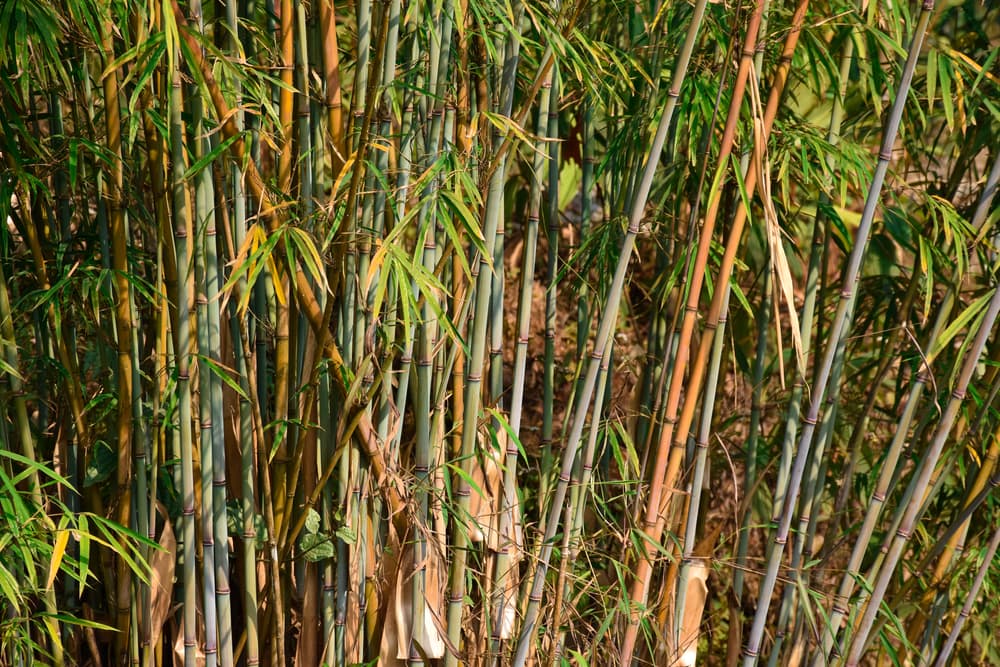
For real visual impact, one of the most striking has to be the Himalayacalamus genus which originates from the Himalayas.
H. hookerianus or Blue bamboo is a stunning variety, which produces green new culms which take on a blue appearance before turning orange or yellow in maturity.
Growing to H6m x W3m, it is a clump-forming variety and not considered invasive, however, installing a rhizome barrier may be prudent.
Preferring shade to full sun, it grows best in moist and well-drained soil and requires a sheltered site.
12) x Hibanobambusa tranquillans ‘Shiroshima’
For a variegated bamboo, H. tranquillans ‘Shiroshima’ or ‘inyouchikuzoku’ as it is sometimes known, is hard to beat.
Producing dark green and cream striped leaves it has a bushy habit and will slowly spread if allowed.
Growing to H2m x W8m, it prefers to be given full sun, will need a rhizome barrier to curtail its growth and is suitable for low screening and hedges.
With hardiness down to -10°C and lower, it will survive all but the harshest winter weather and can be grown in an exposed site.
References
- 1Schröder, S. (2021, August 19). Where does Bamboo grow? Guadua Bamboo. Retrieved April 25, 2023, from https://www.guaduabamboo.com/blog/where-does-bamboo-grow
- 2Phyllostachys nigra | black bamboo. (n.d.). Royal Horticultural Society. Retrieved March 13, 2023, from https://www.rhs.org.uk/plants/12869/phyllostachys-nigra/details

